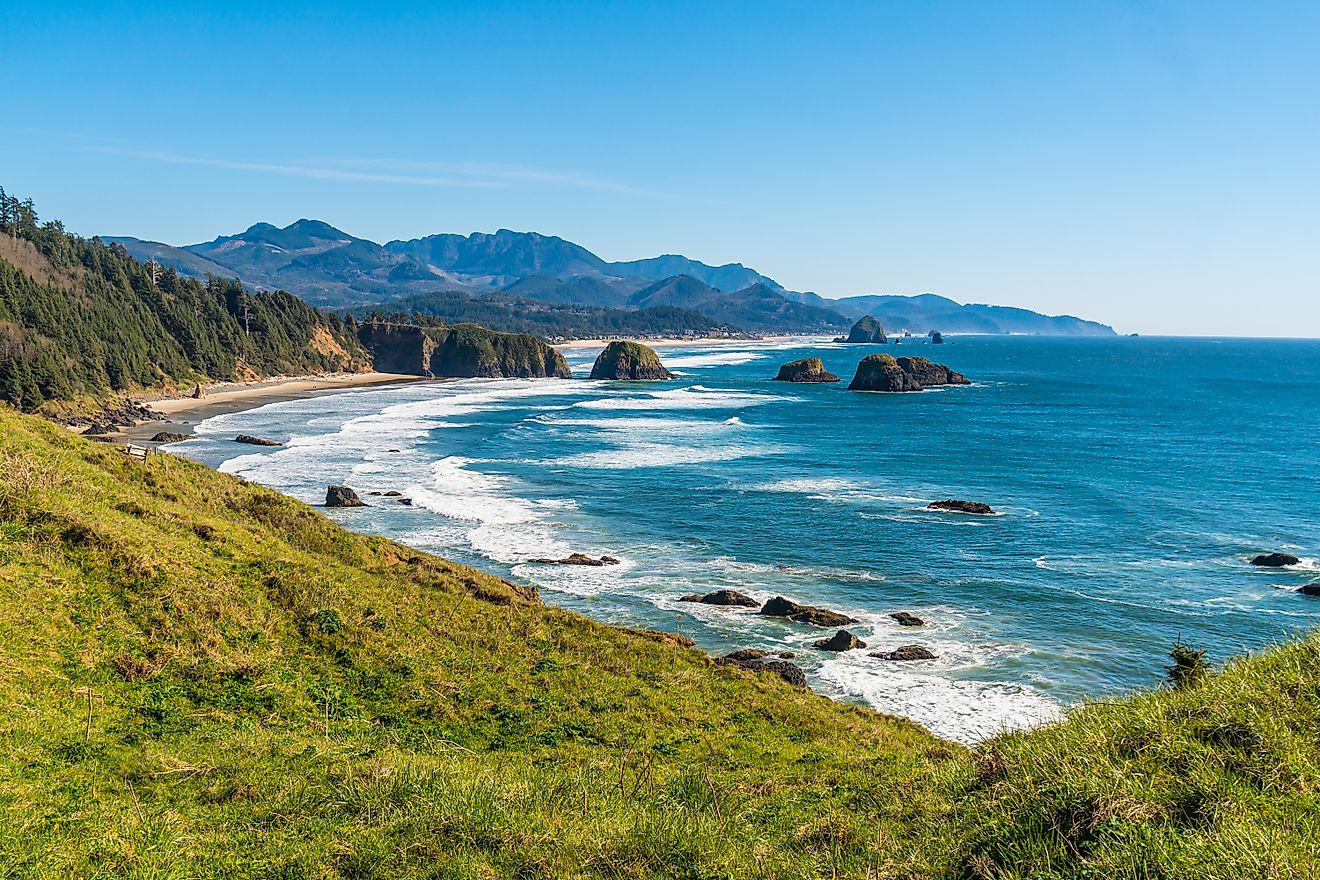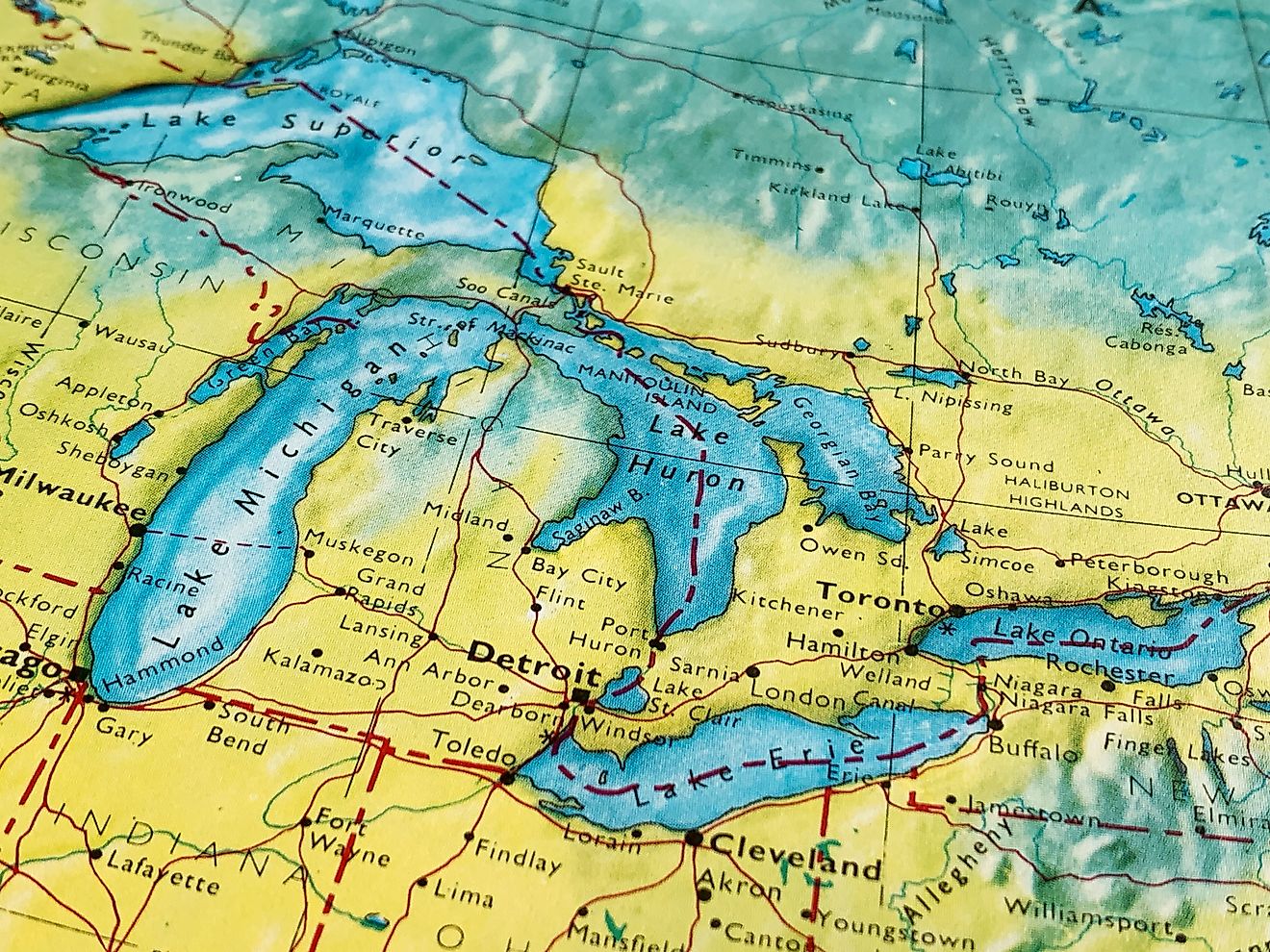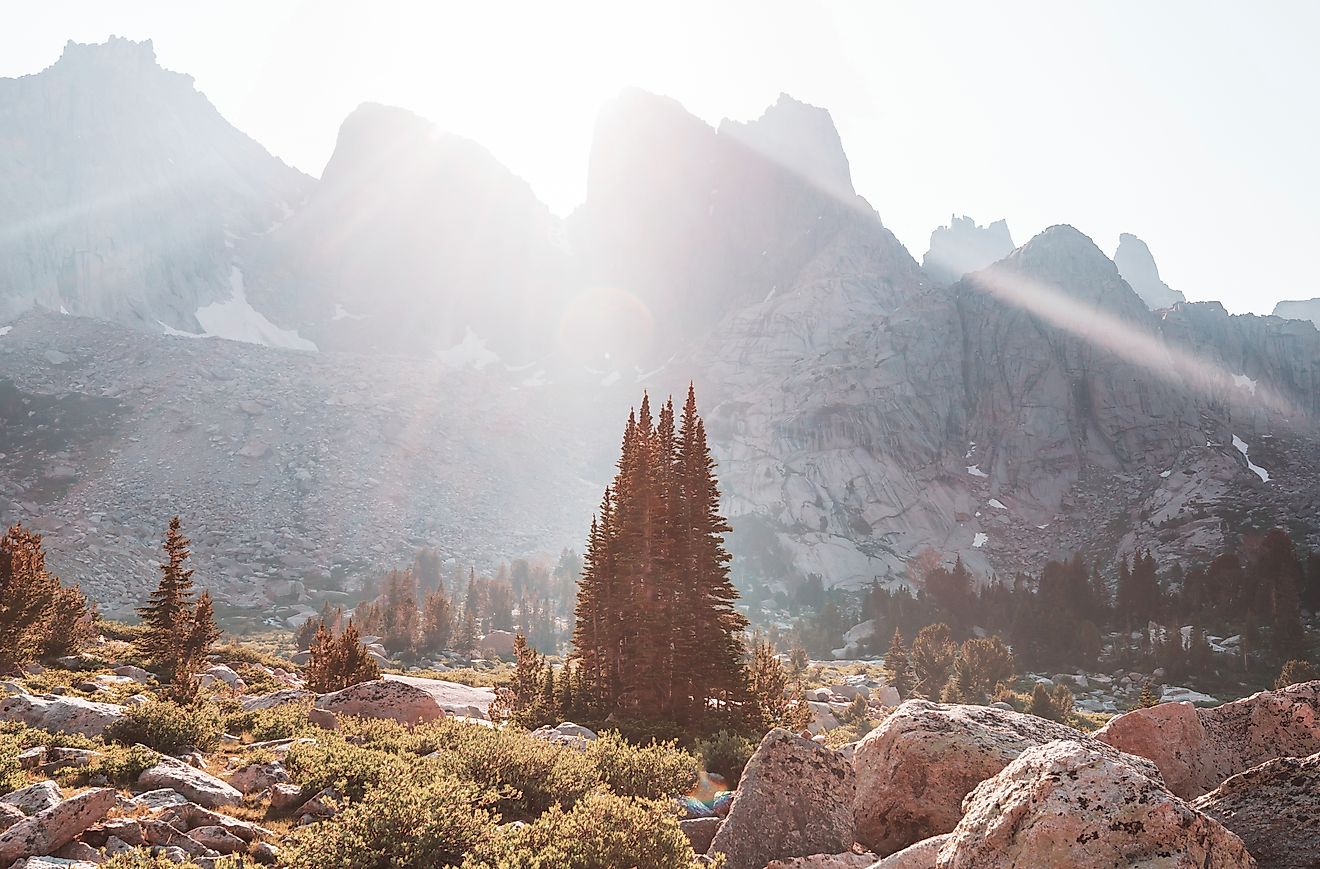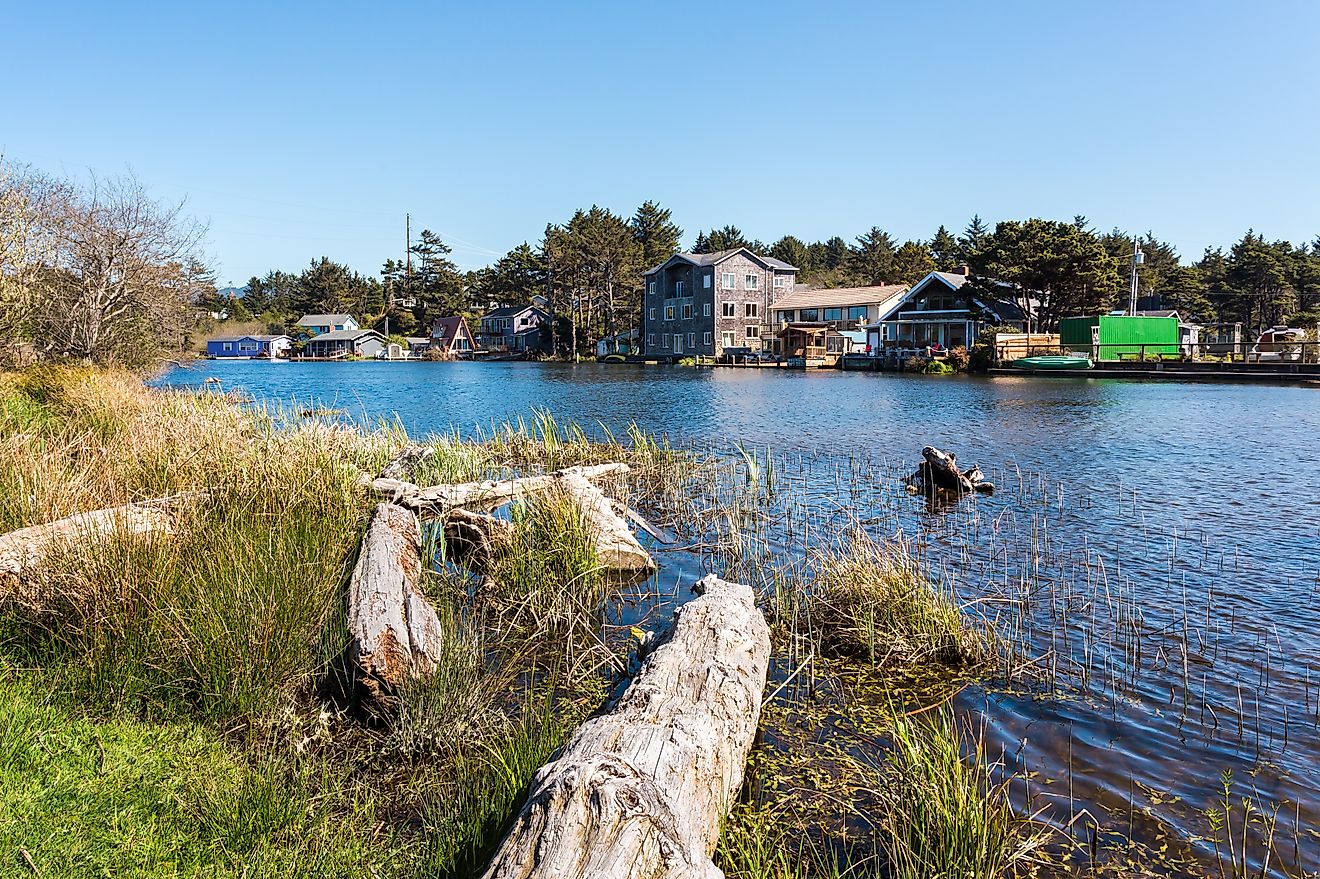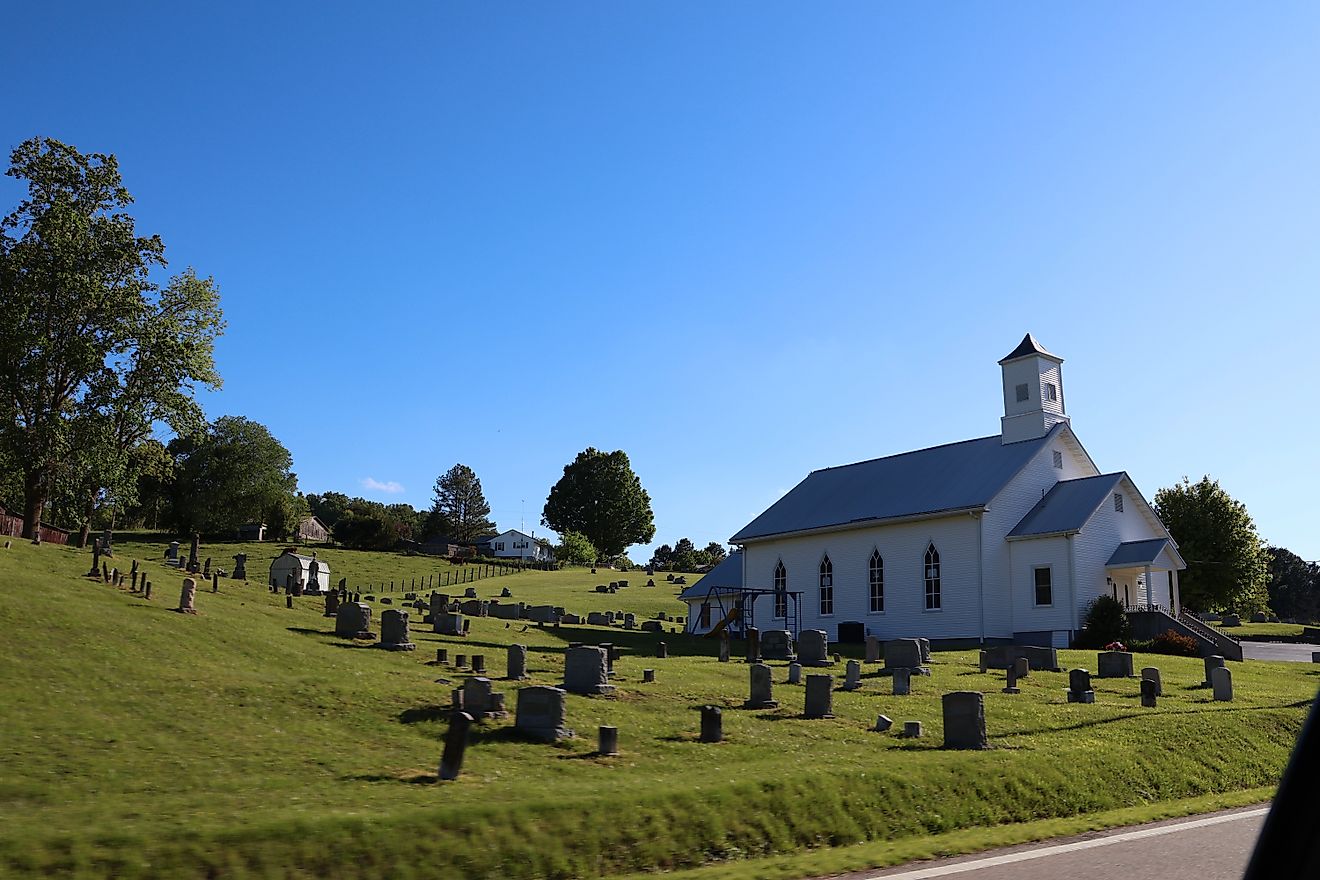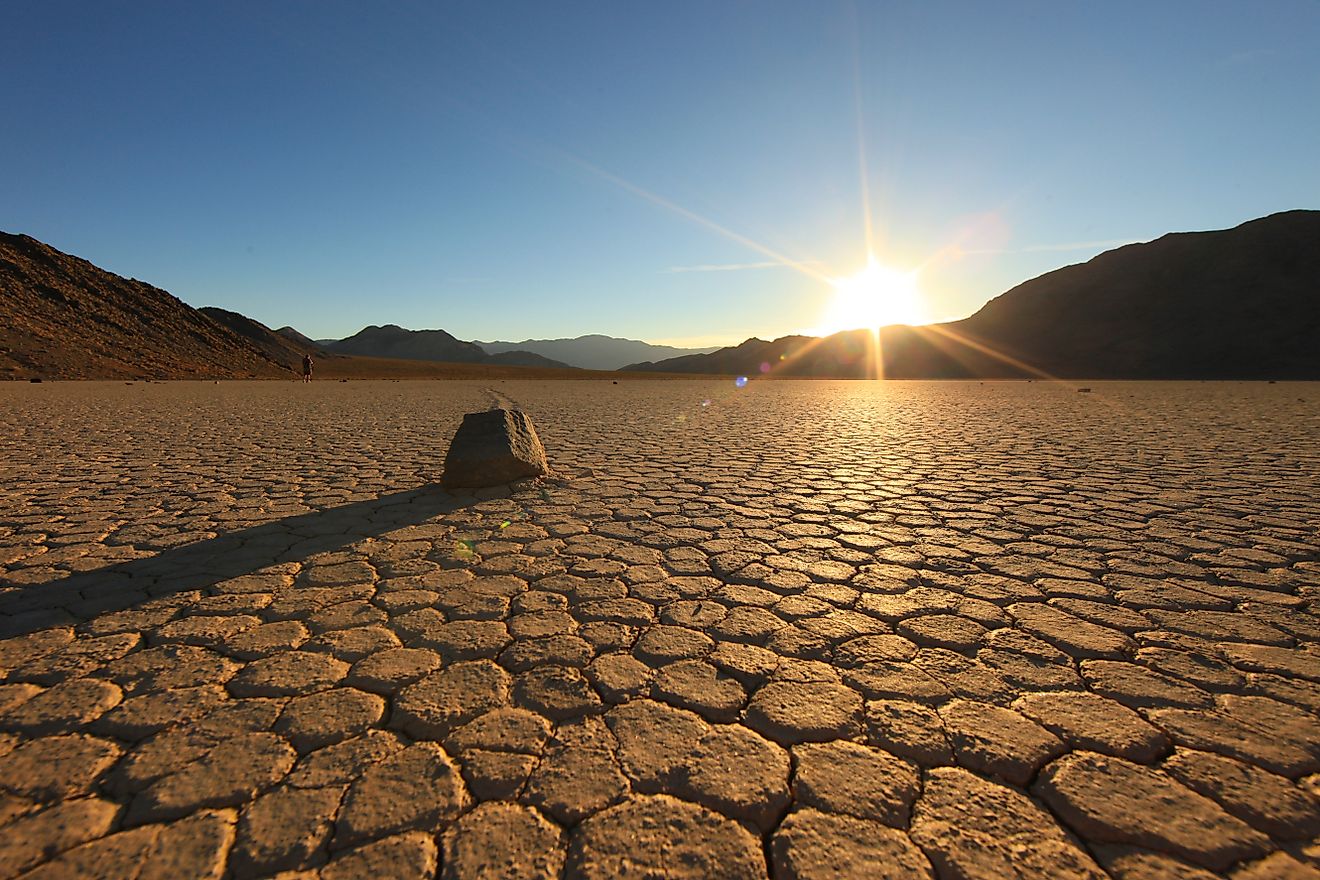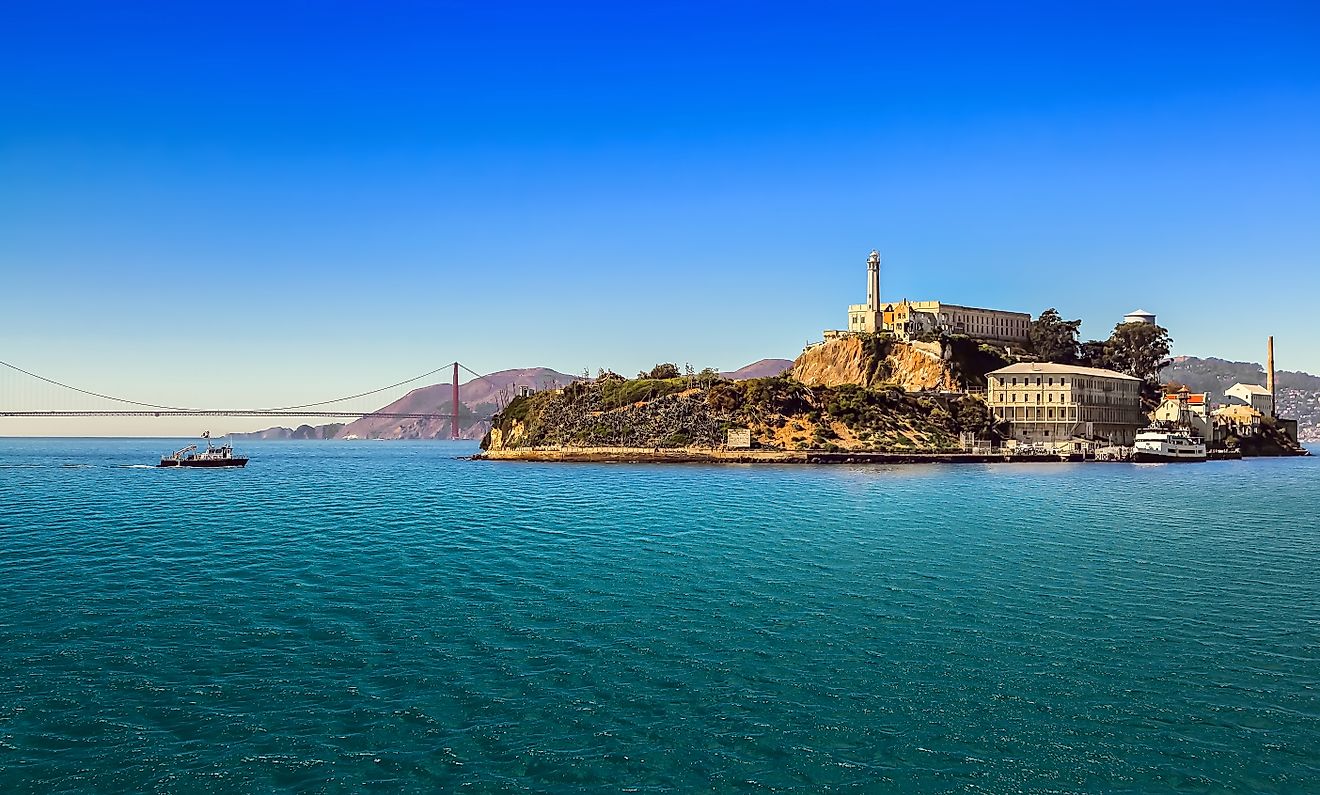
5 US States With Exclaves
The United States is full of surprises, and some of its most curious quirks are hidden in plain sight on the map. Exclaves are portions of a state that are geographically separated from the main body, creating pockets of land that feel almost like mini-mysteries. These areas are shaped by rivers, historical surveying, or international borders and can only be reached by crossing another state or country.
Five states stand out for their striking exclaves. Alaska is completely detached from the contiguous US, creating a massive isolated wilderness. Minnesota’s Northwest Angle sits above the 49th parallel and is only accessible through Canada or by boat. Michigan has the Lost Peninsula, reachable only through Ohio. Tennessee and Missouri surround Kentucky’s Kentucky Bend along a curve of the Mississippi River. Point Roberts, Washington, is a small peninsula separated from the mainland by the Canadian border. Each of these areas offers unique stories, challenging access, and unexpected adventures.
Alaska

-
Location: Northernmost part of North America
-
Access: Overland through Canada or by air or sea
Alaska is the largest state in the country, and its position makes it a true exclave. It is completely separated from the contiguous United States by Canadian territory, making it geographically isolated from the rest of the nation.
This separation defines much of Alaska’s character. From the soaring peaks of Denali to the remote coastal towns of the Panhandle, the state feels like a world apart. The exclave status shapes travel, commerce, and daily life for residents, while also preserving vast wilderness areas and diverse ecosystems found nowhere else in the US.
Minnesota

-
Location: Northern Minnesota
-
Access: Must travel through Canada or use a boat/ferry
Minnesota’s Northwest Angle is perhaps the most famous exclave in the continental United States. It is a small portion of land in northern Minnesota that is cut off from the rest of the state by Lake of the Woods and Canada.
The Northwest Angle was created due to early mapping errors and the negotiation of borders with British North America. Despite its isolation, the region has become a destination for anglers, hunters, and snowmobilers seeking the charm of northern Minnesota. The Angle’s unusual border makes it a curiosity for travelers and a reminder of the nation’s complicated geographic history.
Michigan

-
Location: Monroe County, Michigan
-
Access: Through Ohio via local roads
In southeastern Michigan, the Lost Peninsula provides another fascinating example of an exclave. This small area in Monroe County is part of Michigan but is only accessible by traveling through Ohio.
The Lost Peninsula’s separation is due to the placement of the Detroit River and historical border agreements. Residents rely on Ohio’s roads for most travel, making it a unique case of cross-state daily life. Despite its small size, the Lost Peninsula illustrates how even minor geographic quirks can impact transportation, governance, and daily routines.
Kentucky

-
Location: Fulton County, Kentucky
-
Access: Only by traveling through Tennessee
The Kentucky Bend is a classic example of a natural feature creating an exclave. This piece of land in Fulton County is separated from the rest of Kentucky by a dramatic bend in the Mississippi River, bordered by Missouri and Tennessee.
The Kentucky Bend dates back to the 19th century, when rivers and surveying errors helped define state boundaries. The area is mostly farmland and river bottomland, but its unusual geography makes it a popular sport for geographers and kayakers navigating the Mississippi.
Washington
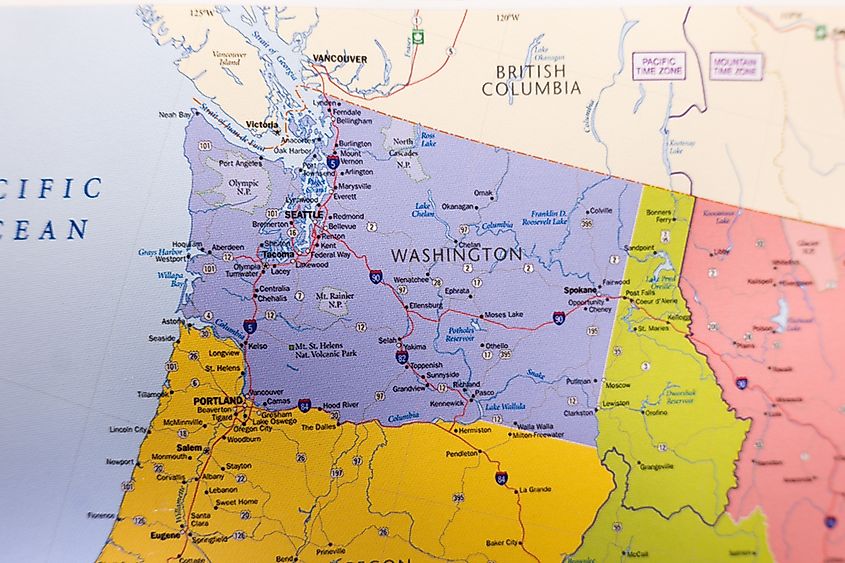
-
Location: Southern tip of the Tsawwassen Peninsula
-
Access: Through Canada, or by water
Point Roberts, Washington, is a small peninsula attached to Canada but legally part of the United States. Residents must cross the Canadian border to reach the rest of Washington State by land, or travel by boat or plane.
Point Roberts’ unique location arose from the 1846 Oregon Treaty, which defined the US-Canada border along the 49th parallel. Today, the exclave has a strong sense of community despite its isolation. Locals enjoy boating, fishing, and nature walks, but the border crossing can complicate travel, deliveries, and access to services.
Why Exclaves Exist
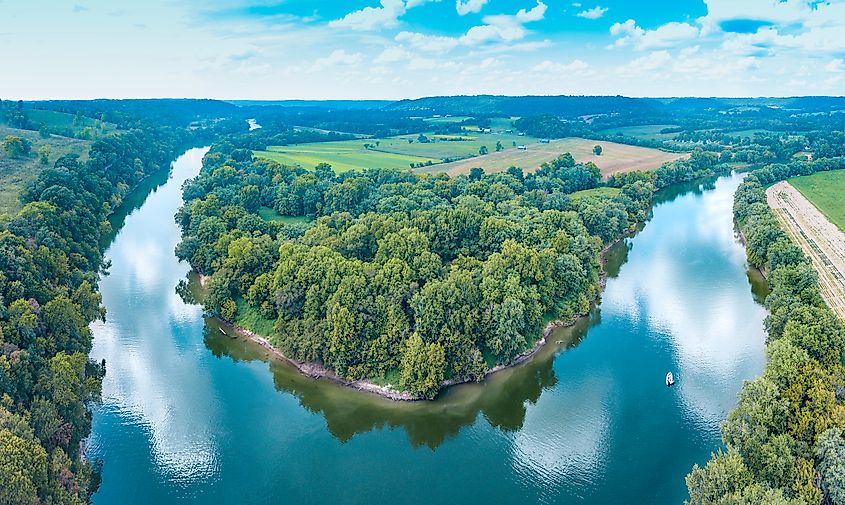
Exclaves occur for several reasons, including:
-
Rivers and natural boundaries: Meandering rivers like the Mississippi can create isolated land pockets.
-
Survey errors: Early cartography mistakes sometimes left small pieces of land detached from their states.
-
International borders: Treaties with Canada and Mexico sometimes produced exclaves along rivers and peninsulas.
-
Historical land grants: Colonial and early US land agreements occasionally created detached parcels.
These unusual land formations show how geography, politics, and human error combine to produce unique situations. They also offer insights into history, settlement patterns, and the evolution of state borders.
Life in an Exclave

Living in an exclave can require special adaptations. Residents may rely on neighboring states or countries for essential services, education, and emergency support. Mail delivery, utilities, and even grocery shopping can involve crossing borders.
For example, in Point Roberts, families cross into Canada for shopping and appointments. In Kentucky Bend, local residents must plan trips to reach county services in Kentucky. These quirks make daily life different from more contiguous areas, but they also create strong local identities and tight-knit communities.
Visiting America’s Exclaves

Visiting the country’s exclaves is a unique way to explore its unusual geography, scenic landscapes, and local culture. Each exclave has its own challenges and rewards, from border crossings to remote wilderness adventures. Here are tips to help plan your visit:
-
Plan your route carefully: Several exclaves, like Minnesota’s Northwest Angle or Washington’s Point Roberts, require crossing into Canada or traveling by boat. Check border requirements and travel restrictions before you go.
-
Check seasonal access: Some exclaves are more accessible in certain seasons. Ice fishing in Minnesota or hiking in Alaska’s backcountry depends on the weather.
-
Bring essentials: Services may be limited. Pack snacks, water, first aid supplies, and navigation tools, especially for remote areas like Kentucky Bend or the Lost Peninsula in Michigan.
-
Embrace local attractions: Explore natural wonders, wildlife, and local history. Alaska offers Denali and coastal towns, Point Roberts has beaches and marinas, and the Kentucky Bend features riverside views and hiking trails.
-
Respect local communities: Many exclaves are small, quiet, and sparsely populated. Support local businesses, follow regulations, and leave no trace in wilderness areas.
-
Allow extra time: Travel distances can be longer than expected due to detours or border delays. Plan for extra travel time to enjoy the scenery without stress.
With preparation, visiting these exclaves becomes a memorable adventure, giving you a chance to see parts of the US that few get to experience firsthand.
Wildlife and Natural Beauty

Many exclaves are prime locations for wildlife and outdoor recreation. Their relative isolation can protect ecosystems and offer outdoor enthusiasts unique experiences.
-
The Mississippi River wetlands attract migratory birds and fish.
-
Northwest Angle offers pristine lakes and forests for fishing, snowmobiling, and hiking.
-
Point Roberts' coastal areas support seals, birds, and lush green landscapes.
-
Alaska's expanse of wilderness provides habitat for bears, moose, salmon, and countless other species.
-
Lost Peninsula's riverbanks and forests support local flora and fauna.
These areas often become hidden gems for birdwatchers, anglers, kayakers, and nature lovers looking for less crowded landscapes.
Conclusion: America’s Hidden Corners

Exclaves may be small or remote, but they are full of stories, beauty, and unusual experiences. From Kentucky’s river bend to Alaska’s vast wilderness, these pockets of land highlight the quirks of US geography. They remind us that state lines are not always simple, and that the most interesting destinations sometimes exist at the edges of the map.
Traveling to an exclave provides insight into geography, history, and the creative ways humans interact with the land. Whether exploring rivers, forests, or coastal peninsulas, these separated pieces of states are worth seeking out for their unusual character and scenic charm.
Quick Facts: Notable US Exclaves
| State | Exclave Name | Location | Access | Population |
|---|---|---|---|---|
| Alaska | Entire State | Northern US, separated by Canada | Through Canada, air, or sea | 730,000 |
| Minnesota | Northwest Angle | Northern Minnesota | Through Canada or lake travel | <150 |
| Michigan | Lost Peninsula | Monroe County | Through Ohio | Small residential |
| Kentucky | Kentucky Bend | Fulton County | Through Tennessee | <20 |
| Washington | Point Roberts | Tsawwassen Peninsula | Through Canada or by water | 1,300 |
Frequently Asked Questions About US Exclaves
What exactly is an exclave?
An exclave is a portion of a state that is geographically separated from the main part of that state. It is still politically part of the state, but you often have to pass through another state or country to reach it.
Why are these five states notable for their exclaves?
Alaska, Minnesota, Michigan, Kentucky, and Washington each have unique exclaves that are either separated by water, rivers, or other countries. These exclaves create unusual travel routes, interesting geography, and sometimes unexpected legal or logistical challenges.
Do these exclaves have residents?
Yes, most of these exclaves have small communities. Residents often navigate unique challenges related to travel, schooling, and access to services because of their geographic separation.
Are there any economic or cultural impacts of being an exclave?
Exclaves often have distinct identities due to isolation. Businesses may cater to cross-border travel, local traditions can differ from the main state, and tourism can benefit from the uniqueness of the location.
Are there other US exclaves beyond these five?
Yes, several US states have smaller exclaves or unusual border situations, but these five are some of the most well-known and geographically interesting examples.
Can you visit these exclaves as a tourist?
Absolutely. Exclaves often offer unique experiences such as remote wilderness (Alaska), lake adventures (Minnesota), historic small towns (Michigan and Kentucky), and coastal scenery (Washington).

